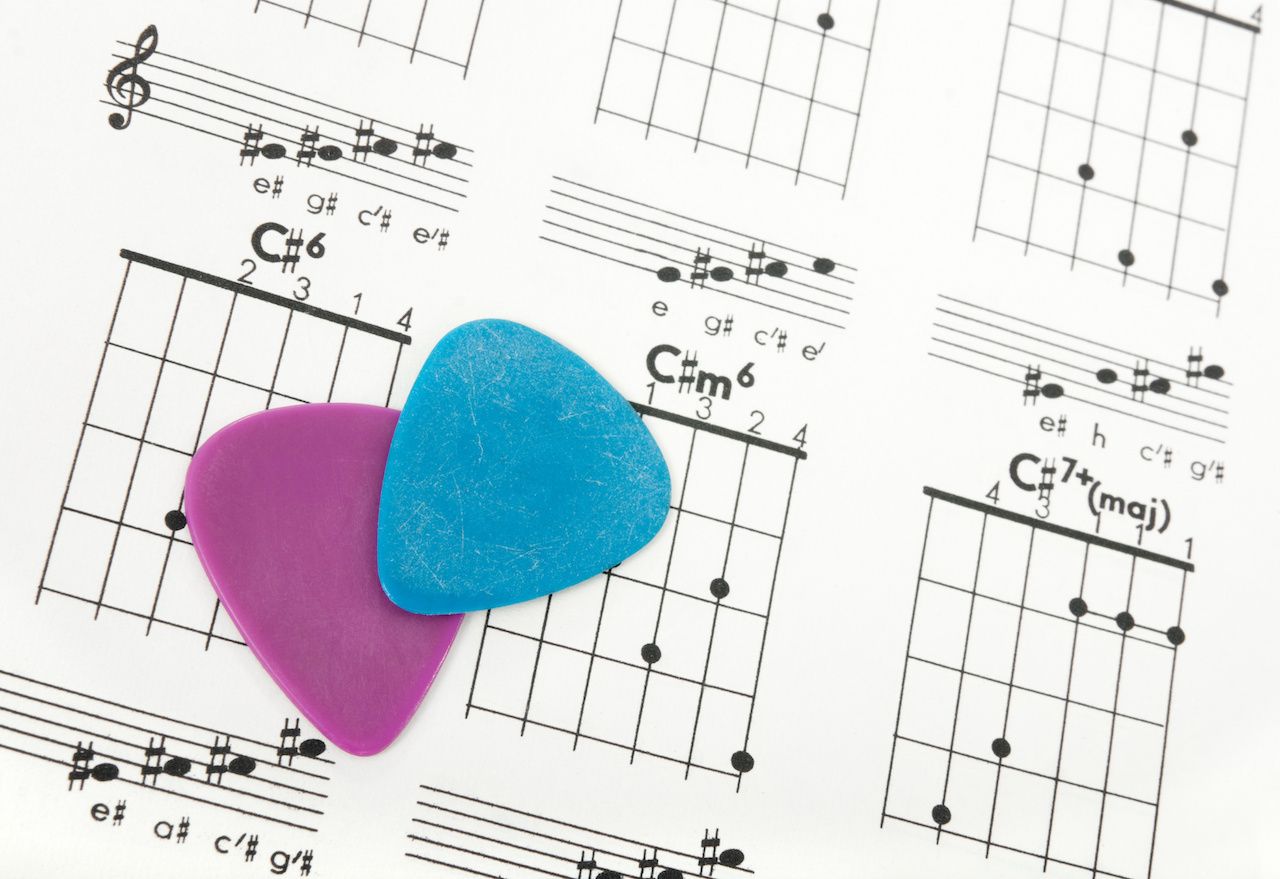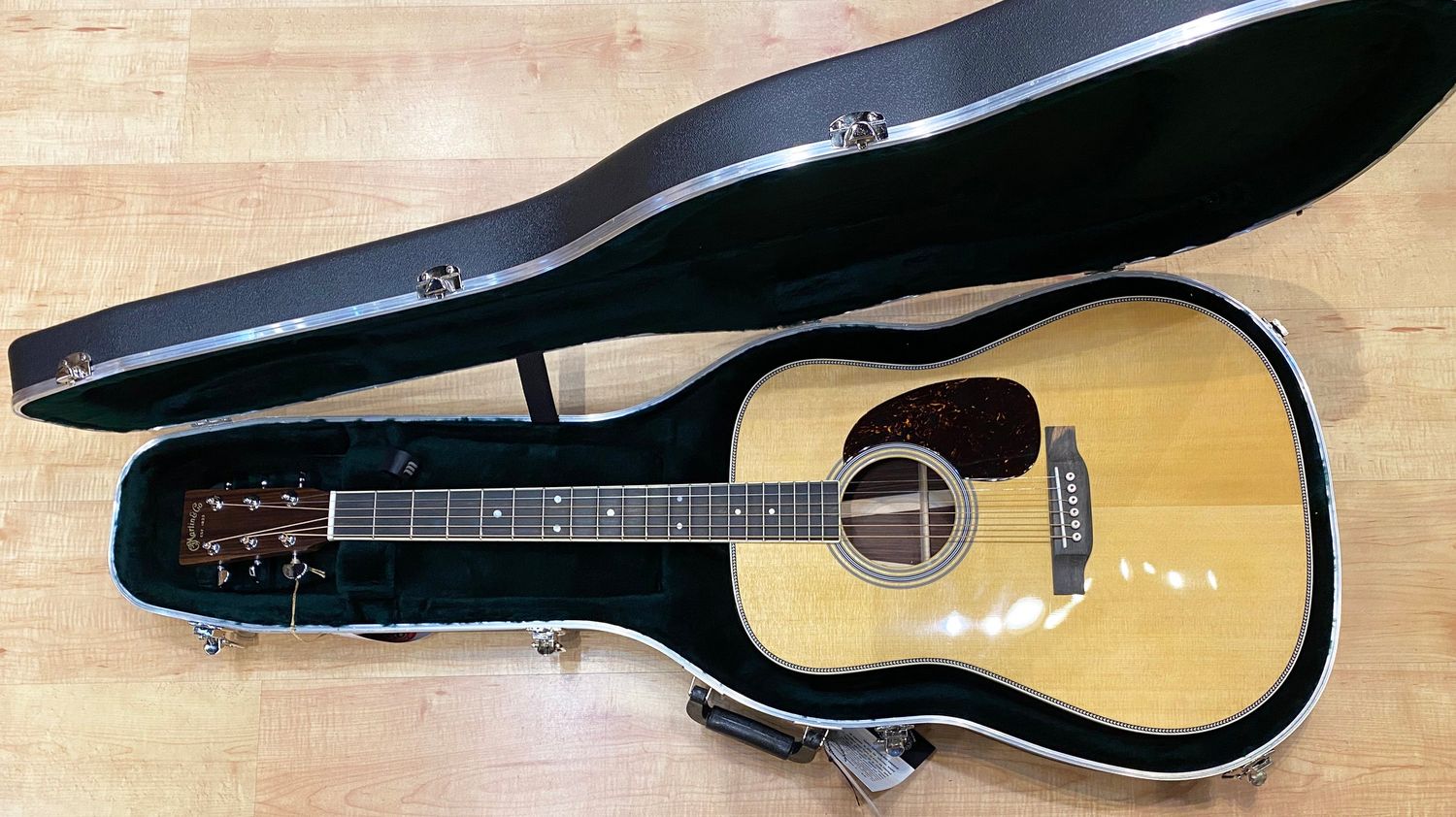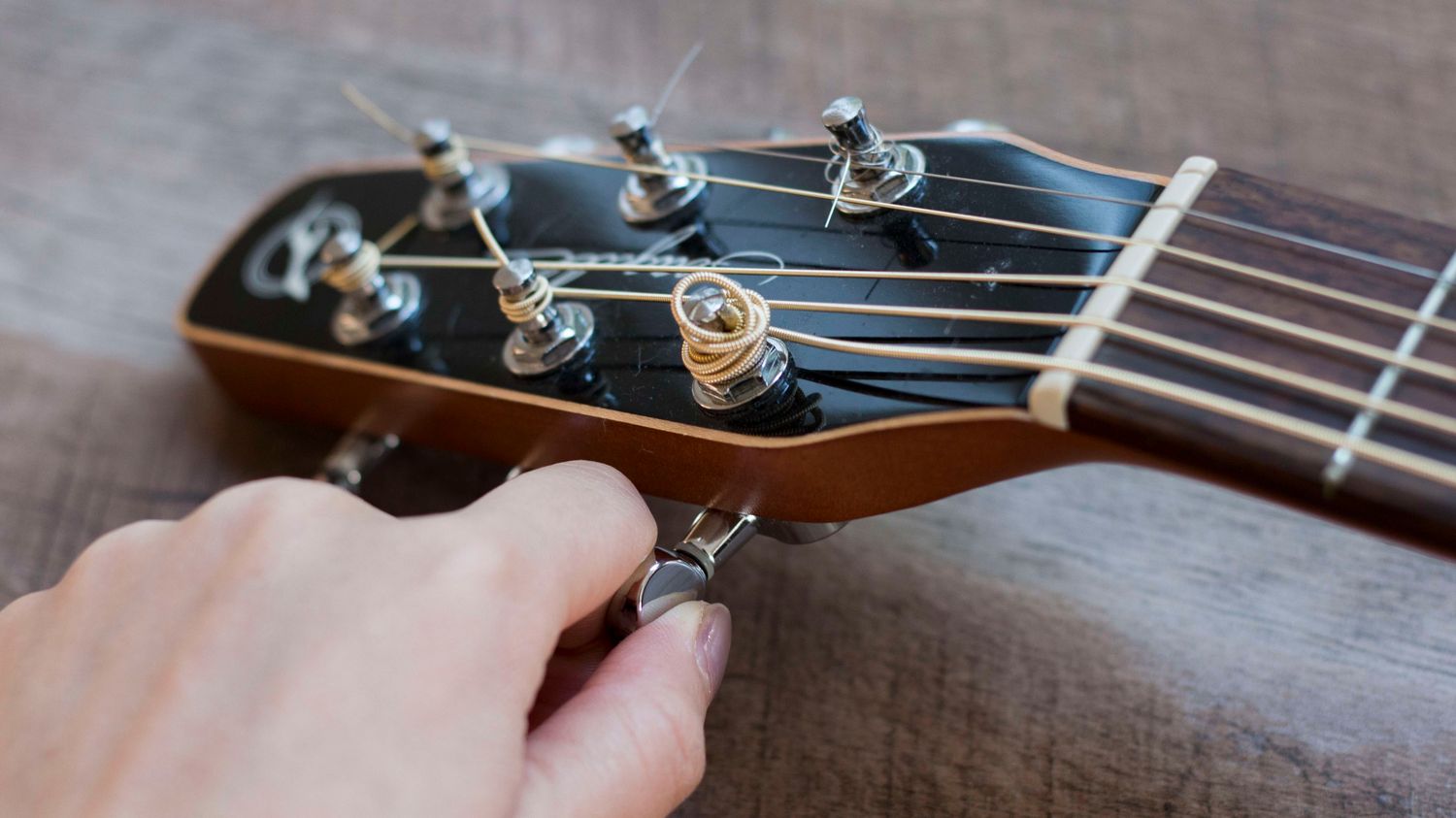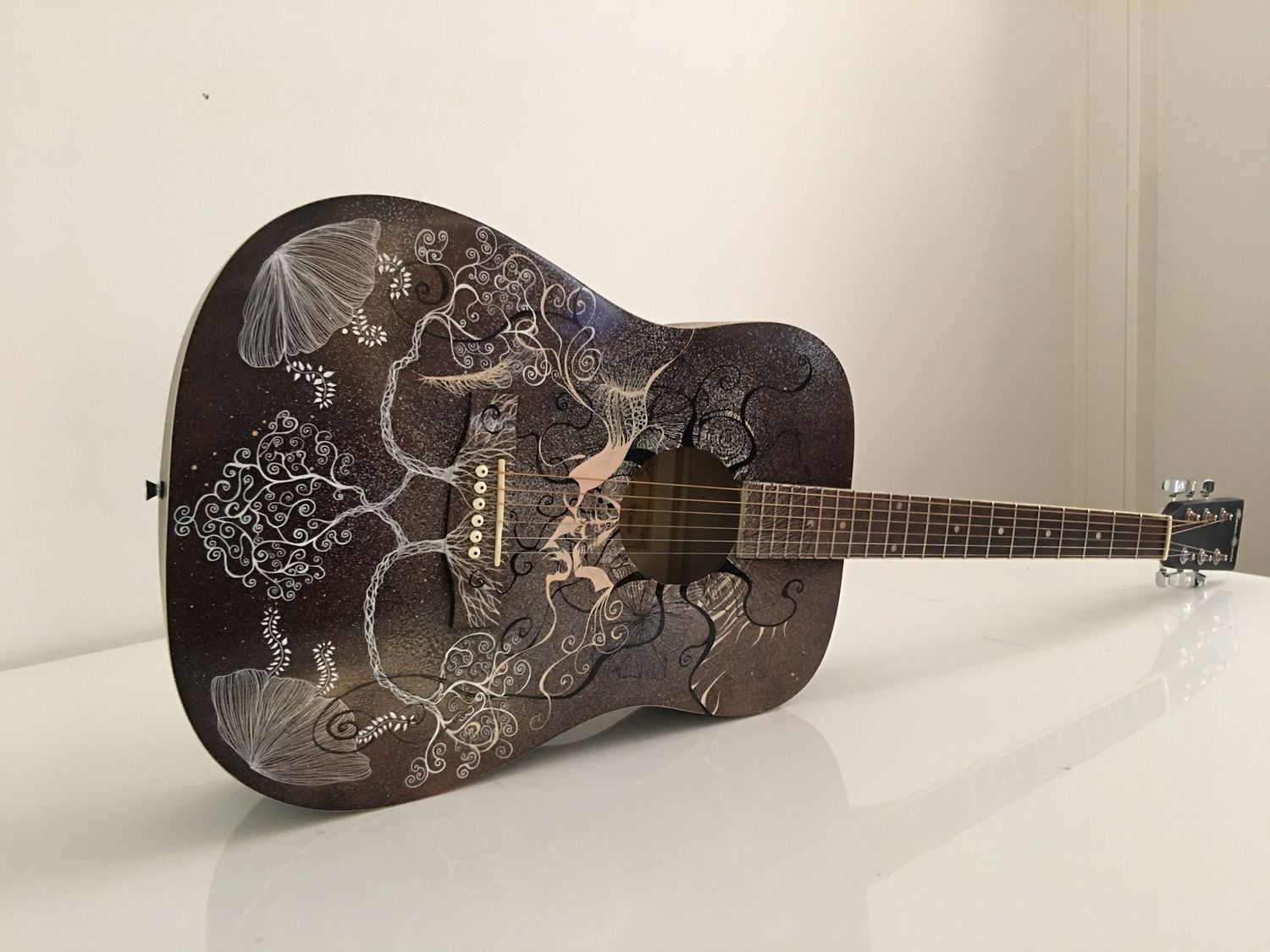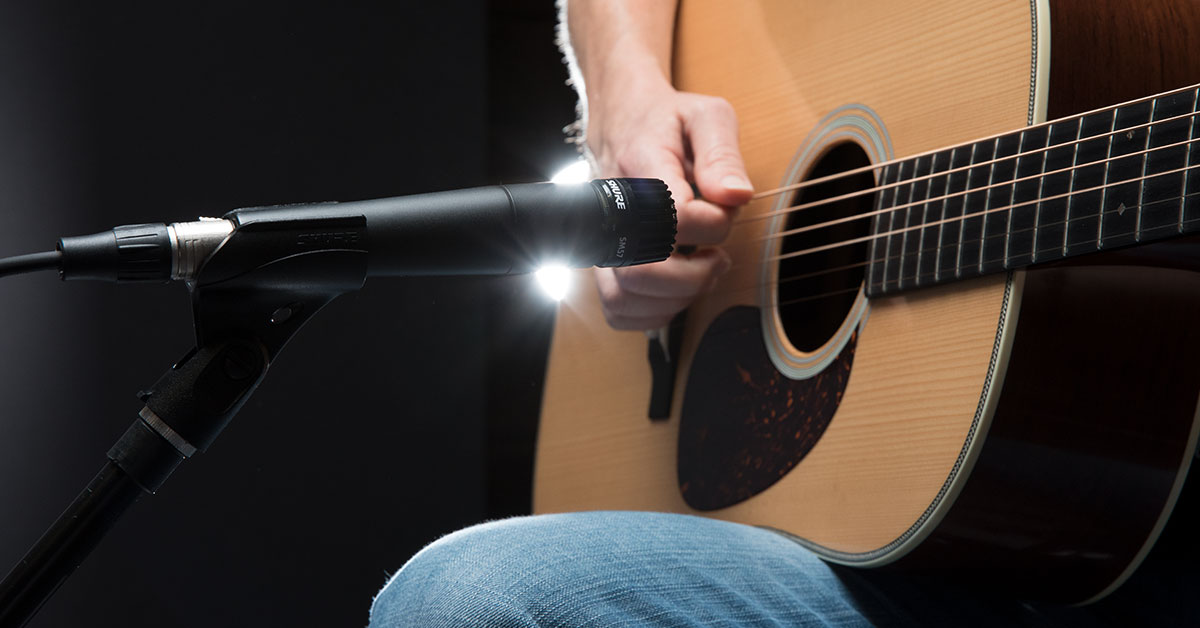Home>Instruments>Guitar>How To Play An Acoustic Guitar For Beginners
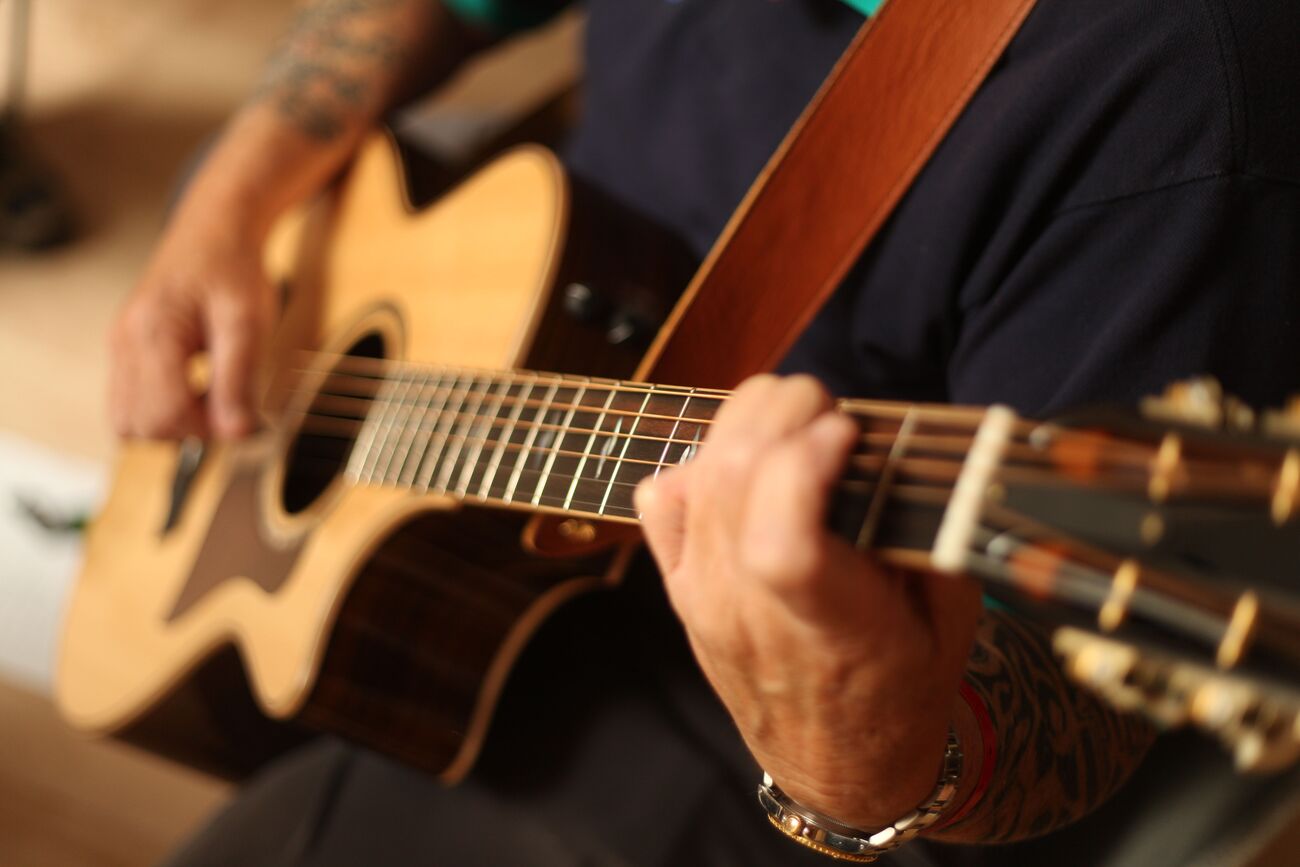

Guitar
How To Play An Acoustic Guitar For Beginners
Modified: February 15, 2024
Learn how to play the guitar with our beginner-friendly acoustic guitar tutorials. Master the basics and start strumming your favorite songs today.
(Many of the links in this article redirect to a specific reviewed product. Your purchase of these products through affiliate links helps to generate commission for AudioLover.com, at no extra cost. Learn more)
Table of Contents
Introduction
Welcome to the world of acoustic guitar playing! Learning to play the acoustic guitar can be a deeply rewarding experience, allowing you to express yourself through music and connect with others in a meaningful way. Whether you’re a complete beginner or have some experience with other instruments, the acoustic guitar offers a versatile and accessible entry point into the world of music.
As a beginner, it’s natural to feel a mix of excitement and perhaps a touch of apprehension as you embark on this musical journey. Rest assured, with the right guidance and a bit of patience, you can make significant progress and have a lot of fun along the way.
In this guide, we’ll take you through the essential steps to get started with playing the acoustic guitar. From choosing the right instrument to learning basic chords and strumming patterns, we’ll cover everything you need to know to begin your musical adventure. By the end of this guide, you’ll have a solid foundation to build upon as you continue to develop your skills and explore the vast and wonderful world of acoustic guitar music.
Choosing the Right Guitar
When starting your acoustic guitar journey, one of the most crucial decisions you’ll make is selecting the right instrument. With a wide array of options available, it’s important to choose a guitar that suits your preferences, playing style, and budget.
Here are some key factors to consider when choosing an acoustic guitar:
- Body Type: Acoustic guitars come in various body shapes, each offering distinct tonal qualities and ergonomic features. The most common shapes include dreadnought, concert, and parlor. Consider trying out different body types to see which one feels most comfortable for you.
- Wood Selection: The type of wood used in a guitar’s construction significantly impacts its sound. For example, spruce is known for its bright and versatile tone, while mahogany produces warm and resonant sounds. Take the time to explore the sonic characteristics of different woods to find the tonal profile that resonates with you.
- Budget: Acoustic guitars are available across a wide price range. While it’s tempting to opt for a high-end model, there are excellent entry-level guitars that offer quality construction and playability at a more affordable price point. Set a budget that aligns with your financial situation and explore guitars within that range.
- Playability: A guitar’s playability refers to how easy and comfortable it is to play. Factors such as the neck profile, string action, and fretboard radius contribute to playability. Look for a guitar that feels comfortable in your hands and facilitates smooth movement along the fretboard.
- Brand and Reputation: Research reputable guitar brands known for producing high-quality acoustic instruments. Reading reviews and seeking recommendations from experienced guitarists can provide valuable insights into the reliability and performance of different brands.
Ultimately, the right acoustic guitar for you is one that resonates with your musical aspirations and feels like an extension of your creativity. By considering the factors mentioned above and taking the time to explore various options, you can find a guitar that inspires and empowers you on your musical journey.
Basic Guitar Anatomy
Before diving into playing the acoustic guitar, it’s essential to familiarize yourself with its basic anatomy. Understanding the various parts of the instrument will not only enhance your playing experience but also provide valuable insights into how the guitar produces sound and functions as a musical tool.
Here are the fundamental components of an acoustic guitar:
- Headstock: Located at the top of the guitar, the headstock houses the tuning pegs, which are used to adjust the tension of the strings and tune the instrument.
- Neck: The neck is the long, slender portion of the guitar that extends from the body to the headstock. It contains the fretboard, frets, and plays a crucial role in determining the guitar’s playability and feel.
- Fretboard: This is the flat surface on the neck where the frets are positioned. It is where you press down on the strings to produce different notes and chords.
- Body: The body of the acoustic guitar contains the sound hole, which allows the sound to resonate and project. The body shape and size influence the guitar’s tonal characteristics and comfort while playing.
- Bridge: Located on the body of the guitar, the bridge holds the strings in place and transmits the vibrations to the guitar’s soundboard, contributing to the instrument’s overall sound.
- Soundhole: This is the opening on the body of the guitar that allows the sound to escape, creating the instrument’s acoustic projection.
- Strings: Acoustic guitars typically have six strings, each tuned to a specific pitch. The strings are plucked or strummed to produce musical notes and chords.
By familiarizing yourself with these basic components, you’ll develop a deeper understanding of how the guitar functions and be better equipped to maintain and care for your instrument. As you progress in your guitar journey, this knowledge will serve as a foundation for exploring more advanced playing techniques and understanding the nuances of different guitar models.
Tuning the Guitar
Before delving into playing your first chords, it’s essential to ensure that your acoustic guitar is properly tuned. Tuning your guitar involves adjusting the tension of the strings to achieve the correct pitches, allowing your instrument to produce harmonious and accurate sounds. Standard tuning for an acoustic guitar involves tuning the strings to the following pitches, from the lowest to the highest string: E, A, D, G, B, E.
Here are a few methods for tuning your acoustic guitar:
- Electronic Tuner: Using an electronic tuner is one of the most accurate and convenient ways to tune your guitar. Simply clip the tuner onto the headstock of the guitar, pluck each string, and adjust the tuning pegs until the tuner indicates that the string is in tune.
- Reference Pitch: If you don’t have an electronic tuner, you can use a reference pitch from another tuned instrument, a tuning fork, or a piano to match the pitches of your guitar strings.
- Online Tuning Apps: There are numerous smartphone apps and online resources that provide visual and audio guidance for tuning your guitar. These tools can be particularly helpful for beginners as they offer step-by-step instructions and visual cues to achieve accurate tuning.
Once your guitar is in tune, take a few moments to play each string individually and listen for any deviations from the correct pitch. Making small adjustments to the tuning pegs as needed will help you achieve precise tuning across all the strings.
Regular tuning is essential for developing a good ear for pitch and maintaining the overall playability of your guitar. It’s a fundamental skill that will significantly impact your progress as a guitarist, ensuring that the music you create sounds melodious and in harmony.
By mastering the art of tuning your acoustic guitar, you’ll lay a solid foundation for your musical journey, setting the stage for enjoyable practice sessions and the exploration of diverse musical styles and techniques.
Holding the Guitar
Learning how to hold the acoustic guitar correctly is a fundamental aspect of becoming a proficient player. Proper positioning not only ensures comfort and ease of play but also contributes to the production of clear and resonant sounds. Whether you’re sitting or standing while playing, the following guidelines will help you establish a comfortable and effective posture:
- Sitting Position: When seated, place the guitar on your right leg (for right-handed players) or left leg (for left-handed players). The waist of the guitar should rest on the leg, with the back of the instrument against your body. Keep your back straight and maintain a relaxed posture to facilitate unrestricted movement of your arms and hands.
- Strap Usage (Optional): If you prefer to play with a guitar strap while seated, you can adjust the strap to raise the guitar to a comfortable playing height. This can provide additional support and stability, especially during longer practice sessions or performances.
- Arm Placement: Position your strumming (right) arm over the body of the guitar, allowing your hand to reach the strings comfortably. Your forearm should rest lightly on the top of the guitar’s body, providing stability and control while strumming or picking.
- Fretting Hand: When forming chords or playing individual notes, ensure that your fretting (left) hand can easily reach the entire fretboard. Maintain a relaxed and natural curve in your wrist to facilitate smooth transitions between chords and minimize strain on your hand and fingers.
- Standing Position: If you prefer to play the guitar while standing, use a guitar strap to position the instrument at a comfortable height. Adjust the strap length to achieve a natural playing position, allowing you to reach the frets and strumming area with ease.
As you familiarize yourself with holding the guitar, take the time to experiment with different positions and adjust the instrument to suit your body and playing style. Comfort and ergonomics play a significant role in your ability to play for extended periods and execute techniques with precision and fluidity.
By adopting a proper and relaxed posture, you’ll create a solid foundation for your guitar playing journey, setting the stage for enjoyable practice sessions and the exploration of diverse musical styles and techniques.
Basic Guitar Chords
Mastering fundamental guitar chords is a pivotal step in your acoustic guitar journey. Chords form the building blocks of countless songs across various genres, and learning to play them fluently will expand your musical repertoire and enhance your playing skills.
Here are some essential beginner-friendly chords to kickstart your acoustic guitar chord vocabulary:
- C Major (C): This open chord is formed by placing your ring finger on the third fret of the fifth string, middle finger on the second fret of the fourth string, and index finger on the first fret of the second string. Strum from the fifth string down, avoiding the sixth string.
- G Major (G): The G chord involves placing your ring finger on the third fret of the first string, middle finger on the second fret of the fifth string, and index finger on the second fret of the sixth string. Strum all six strings for this chord.
- D Major (D): Form the D chord by positioning your index finger on the second fret of the third string, middle finger on the second fret of the first string, and ring finger on the third fret of the second string. Strum from the fourth string down, avoiding the fifth and sixth strings.
- E Minor (Em): This simple chord requires placing your index and middle fingers on the second fret of the fifth and fourth strings, respectively. Strum all six strings for the Em chord.
- A Minor (Am): The Am chord is created by placing your middle finger on the second fret of the fourth string. Strum from the fifth string down, avoiding the sixth string.
Practice transitioning between these chords to build dexterity and familiarity with the fretboard. Start by strumming each chord individually to ensure clarity and proper finger placement, then progress to changing between chords in a smooth and seamless manner. Patience and consistent practice are key to mastering these foundational chords.
As you become comfortable with these basic chords, you’ll gain the confidence to explore more complex chord shapes and progressions, unlocking a world of musical possibilities and creative expression on the acoustic guitar.
Strumming Patterns
Developing a command of strumming patterns is essential for bringing rhythm and groove to your acoustic guitar playing. Strumming patterns dictate the timing and direction of your strumming hand, adding texture and dynamics to the chords and melodies you play. As a beginner, mastering fundamental strumming patterns will lay the groundwork for your rhythmic proficiency and musical expression.
Here are a few common strumming patterns to get you started:
- Downstrokes Only: Begin by strumming downward through the strings in a steady, consistent motion. This pattern is ideal for straightforward rhythms and serves as a foundational strumming technique.
- Down-Up Strumming: In this pattern, alternate between downward and upward strums to create a more dynamic and lively rhythm. Start with a simple down-up-down-up motion, ensuring that your strumming hand maintains a steady flow.
- Waltz Strum (D-DU-UD): The waltz strum, commonly used in 3/4 time signatures, involves a distinct pattern of three strums: down, down-up, up-down. This pattern adds a graceful and lilting feel to your playing, often heard in waltzes and ballads.
- Syncopated Strumming: Experiment with syncopated patterns by emphasizing off-beat strums, creating a syncopated or “choppy” feel. This technique adds rhythmic complexity and can inject energy into your playing, particularly in genres like funk and reggae.
As you practice these strumming patterns, focus on maintaining a steady rhythm and consistent dynamics. Pay attention to the sound produced by your strumming hand, aiming for clarity and precision in each stroke. It’s also beneficial to practice strumming along with a metronome or backing track to develop a strong sense of timing and groove.
Additionally, experiment with applying different strumming patterns to the basic chords you’ve learned, exploring how variations in strumming can alter the feel and mood of a song. By honing your strumming skills, you’ll infuse your acoustic guitar playing with rhythmic vitality and enhance the overall musicality of your performances.
Playing Simple Songs
Now that you’ve familiarized yourself with basic guitar chords and strumming patterns, it’s time to apply your newfound skills to play simple songs. Learning to play complete songs not only reinforces your chord transitions and strumming techniques but also provides a sense of accomplishment and enjoyment as you bring recognizable melodies to life on your acoustic guitar.
Here are a few beginner-friendly songs that you can start learning:
- “Knockin’ on Heaven’s Door” by Bob Dylan: This iconic song features a simple chord progression (G, D, Am) and a straightforward strumming pattern. The repetitive structure makes it an excellent choice for practicing chord changes and rhythm.
- “Horse with No Name” by America: With just two chords (Em and D6/9), this song offers a relaxed and mellow vibe. Focus on the rhythmic feel and the interplay between the chords to capture the song’s atmospheric quality.
- “You Are My Sunshine” (Traditional): This timeless tune can be played with basic chords such as C, F, and G. Its simple, uplifting melody and chord progression make it an ideal piece for honing your strumming and vocal accompaniment skills.
- “Leaving on a Jet Plane” by John Denver: Featuring standard chords like G, C, D, and Em, this song offers an excellent opportunity to practice chord transitions and explore variations in strumming patterns to complement the heartfelt lyrics.
As you delve into learning these songs, take a measured approach, focusing on mastering one song at a time. Pay attention to the nuances of each composition, including the chord changes, strumming dynamics, and vocal melodies if you choose to sing along. It’s perfectly normal to start at a slower tempo and gradually build speed and fluency as you become more comfortable with the material.
Furthermore, don’t hesitate to personalize the songs by experimenting with different strumming patterns, chord voicings, and embellishments. Making the songs your own through creative interpretation will deepen your connection to the music and foster a sense of individual expression.
By immersing yourself in the process of learning and playing simple songs, you’ll not only refine your technical abilities but also experience the joy and fulfillment that music brings, setting the stage for further exploration and growth as an acoustic guitarist.
Tips for Beginner Guitarists
As you embark on your acoustic guitar journey, it’s valuable to keep a few essential tips in mind to enhance your learning experience and progress as a guitarist. Here are some insightful pointers tailored to beginner players:
- Consistent Practice: Dedicate regular practice sessions to build muscle memory, improve finger dexterity, and reinforce your understanding of chords and strumming patterns. Short, focused practice sessions often yield better results than sporadic, lengthy practices.
- Patient Progression: Embrace the learning process and be patient with yourself. Mastery takes time, and it’s normal to encounter challenges along the way. Celebrate small victories and maintain a positive mindset as you work through difficulties.
- Ear Training: Develop your ear by actively listening to the music you’re playing. Train yourself to recognize chord changes, melodies, and rhythms, which will improve your ability to play by ear and enhance your overall musicality.
- Explore Music Theory: While not a prerequisite, familiarizing yourself with basic music theory can deepen your understanding of chord structures, scales, and song composition. It provides a valuable framework for expanding your musical knowledge.
- Seek Guidance: Consider taking lessons from a qualified instructor or accessing online tutorials to receive structured guidance and personalized feedback. A knowledgeable mentor can provide valuable insights and help you avoid developing bad habits early on.
- Experiment with Songwriting: Engage your creativity by experimenting with songwriting. Use the chords and strumming patterns you’ve learned to create simple melodies and lyrics, fostering a deeper connection to the music-making process.
- Stay Inspired: Immerse yourself in music that inspires you. Listen to a diverse range of artists and genres, attend live performances, and stay curious about different playing styles and techniques. Drawing inspiration from various sources can fuel your passion for playing the guitar.
- Proper Instrument Maintenance: Learn to care for your guitar by keeping it clean, changing strings regularly, and storing it in a suitable environment. A well-maintained instrument not only sounds better but also encourages consistent practice and performance.
By incorporating these tips into your guitar practice and exploration, you’ll lay a strong foundation for continuous growth and enjoyment as an acoustic guitarist. Embrace the learning process, stay open to new musical experiences, and let your passion for music propel you forward on your captivating journey with the acoustic guitar.
Conclusion
Congratulations on taking the first steps toward mastering the acoustic guitar! As you’ve delved into the essential aspects of playing, from choosing the right instrument to learning basic chords and strumming patterns, you’ve embarked on an enriching and rewarding musical journey. By embracing the foundational principles outlined in this guide, you’ve set the stage for continuous growth and enjoyment as an acoustic guitarist.
As you progress, remember that patience, consistent practice, and a positive mindset are your allies in the pursuit of musical proficiency. Whether you’re strumming simple chords or embarking on the exploration of more complex techniques, each moment spent with your guitar is an opportunity for self-expression and creative fulfillment.
As you continue to hone your skills, don’t hesitate to seek inspiration from a diverse range of musical genres and artists. Embrace the joy of learning new songs, experimenting with different playing styles, and expressing your unique musical voice through the acoustic guitar.
Above all, let your passion for music be your guiding light. Whether you aspire to entertain friends around a campfire, perform on stage, or simply find solace in the meditative act of playing, the acoustic guitar offers a boundless canvas for your musical aspirations.
As you navigate the winding path of learning and discovery, remember that every chord mastered, every strum perfected, and every song learned brings you closer to realizing your full potential as a guitarist. Embrace the journey, savor the moments of musical revelation, and let the timeless allure of the acoustic guitar be your faithful companion on this captivating odyssey of sound and soul.




